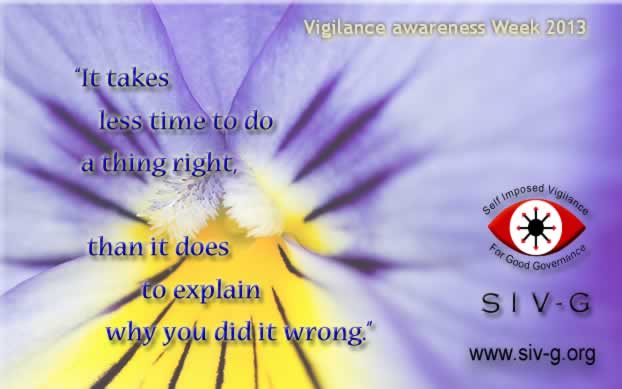One of the happy memories I treasure is the fact that as Central Vigilance Commissioner in the year 2000, I was able to initiate the observance of the Vigilance Awareness Week nationwide in all the offices of the Govt of India with effect from 31st October which was the birthday of one of the greatest leaders and an icon for integrity – Sardar Vallabhbhai Patel.
Sardar Patel is indeed the maker of modern India. In a remarkable historic feat within a period of 18 months from the date of India’s Independence on 15th August 1947, he welded our country into one integrated nation by persuading more than 600 native states to integrate with it to become a modern independent nation. He overcame the challenges put up by the ruler of Junagadh and the mighty Nizam of Hyderabad who opted to join with Pakistan.
If Sardar Patel had prevailed and had also handled the problem of Jammu and Kashmir, J&K would have become a part of India long ago. There will be no Kashmir problem.
Sardar Patel was also a great icon of integrity in all senses – intellectual, moral and financial. He demonstrated that it is possible to be an active participant in public and political life without having any taint of corruption. I am happy that the practice of observing one week in every year as the Vigilance Awareness Week is being continued year after year.
While the Vigilance Awareness Week was observed from 31st October in the years 2000 and 2001, from the year 2002 the strict adherence to 31st October has been given up for some unknown reasons. In recent political debates especially during the election campaign, the contribution of Sardar Patel was vigorously highlighted and emphasized by our Prime Minister Narendra Modi. He has also indicated an imaginative project for erecting the world’s largest statue in memory of Sardar Patel.
I would therefore strongly urge that at least from this year 2014 the government should officially declare that 31st October, Sardar Patel’s birthday will mark the observance of the Vigilance Awareness Week every year.
Technology and especially information technology, has made remarkable breakthroughs and the growth of this sector has indeed been dramatic. The greatest antidote to corruption is transparency. Sunlight is the best antiseptic for corruption. Information technology helps in handling a great mass of data and also greatly improves accessibility.
The world has become a global village thanks to IT. It’s a common experience that people in villages do not enjoy the luxury of anonymity. In a village community everyone knows everybody else. Corrupt practices are more difficult in such a community. The people in villages are likely to be more honest in their day to day activities than those who live in big towns and cities.
That is perhaps the reason why we find that in the time of our forefathers there was a greater degree of honesty in the community than what prevails today.
The following technologies have created an environment by which there could be greater transparency in our modern communities. Corruption can be checked by naming and shaming and more important bring to book those who indulge in it.
Some of these technologies are likely to be useful and emerge as enablers in combating corruption.
1.Smart phones with facilities for taking photographs, recording conversations and ever growing applications for a wide range of activities. These have made every citizen a potential vigilance activist and whistleblower.
2.The citizens’ power is multiplied by the large number of TRP hungry 24x7 news channels. Naming and shaming as a strategy for corruption was initiated for the first time in the world by the CVC in January 2000 when the names of corrupt officials of the senior civil services like IPS, IAS, IRS against whom prosecution has been recommended or major penalty suggested by CVC, were published. This scope has increased tremendously thanks to the ubiquitous application of information technology in the context of e-governance and e-seva.
The manipulative technologies regarding voice and data and the working of criminal minds have also raised the danger of misuse and cyber-crimes. In this context the effective use of technologies for combating corruption will depend upon application of intelligent common sense and thinking innovatively. As Oscar Wilde said, “the thief is the artist, the policeman is only a critic”.
With an awareness of this basic principle the wide range of technologies available today not only in IT but in other areas we find that technology can indeed help to combat corruption and usher in good governance. Each one of us can participate in building a well governed clean India.

